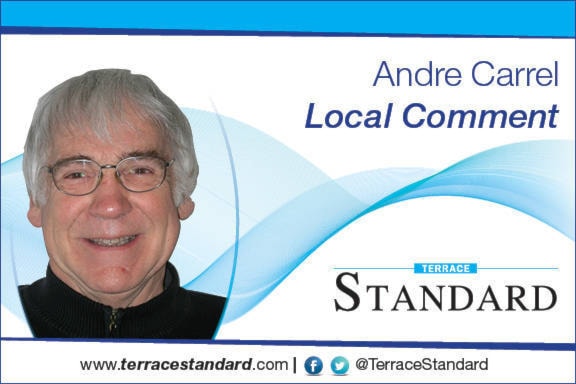Terrace has two major transportation infrastructure projects whose realization is dependent on government grants: Lanfear Drive and a second CN overpass. These are imperative projects; they are not of the “would be nice to have” kind. Which of the two should have priority depends upon which side of the tracks you ask the question. Given climate change and post pandemic challenges, these two local infrastructure projects are not likely to top the list of priorities for the federal or for the provincial government. With the commitment for a new hospital, Terrace is receiving a fair share of government investment for the foreseeable future. The chances of securing major capital funding for two local infrastructure projects are slim.
Lanfear Drive allows for an affordable alternative, whereas a second CN overpass does not. It may thus be sound strategy for the city to concentrate its political efforts on the overpass project.
Plan B for Lanfear may be to direct vehicle traffic along McConnell Avenue to Highway 113, and to restrict Lanfear for exclusive use by pedestrian and bicycles. An inconvenience for motorists, but a significantly lesser inconvenience than what closing Lanfear means for pedestrians and bicycles users.
The problem with a temporary fix for Lanfear is that it is temporary. It is a $360,000 solution to last maybe five years. What happens in 2026? A surprise $9 million government grant or another $360,000 temporary fix? Closing Lanfear Drive to vehicular traffic, permanently, would require improvements to the McConnell/Kalum Lake Rd. intersection and a re-alignment of the McConnell Ave and Thomas St. corner. The cost for such improvements may exceed the cost of a temporary Lanfear fix. The decision amounts to a choice between spending money on infrastructure improvements vs. spending it on a temporary fix. We have designated Lanfear an arterial road; the real problem is that we cannot afford to maintain it. That is our problem; it is not the government’s problem.
As long as municipal discretionary revenues remain limited to property taxes and user fees, revenues will fall short of what is needed to maintain municipal infrastructure and services. A 1993 Harvard study found that “The available evidence shows that development does not cover new public costs; that is, it brings in less revenue for local governments than the price of servicing it.” These conclusions are as true today as they were thirty years ago. The revenue constraints for municipalities have not changed. We cannot grow our way out of a dilemma that continues to frustrate council, after council, after council.
We can hope for government largess, we can apply and re-apply for infrastructure grants, and we can spend time and money lobbying government ministers. What we cannot afford to do is spend hundreds of thousands of dollars on temporary fixes. Pleading for more money from governments to help us pay for what we are responsible for, and blaming them for not delivering, amounts to procrastination - attempts to avoid having to make the difficult decisions we need to make if we are to live within our means.
Closing Lanfear Drive to pedestrians and bicycles users was not an easy decision. It angered many citizens. Closing Lanfear Drive to vehicular traffic would anger many more citizens. Raising property taxes to the level needed to reconstruct Lanfear would not make citizens happy; such a decision would more likely trigger a tax revolt.
